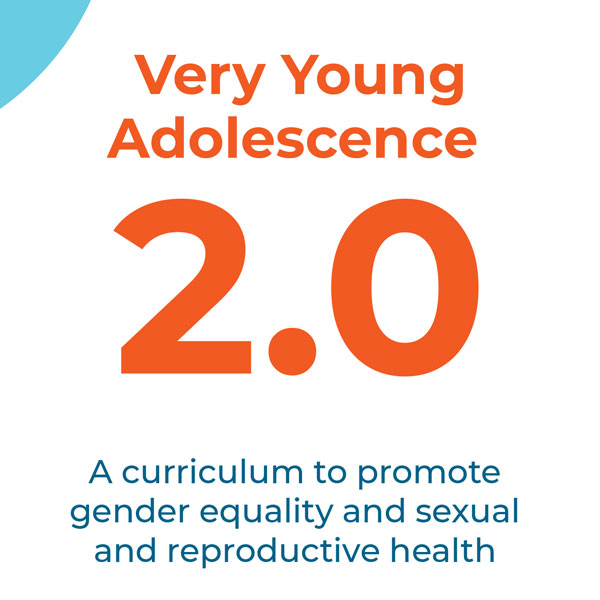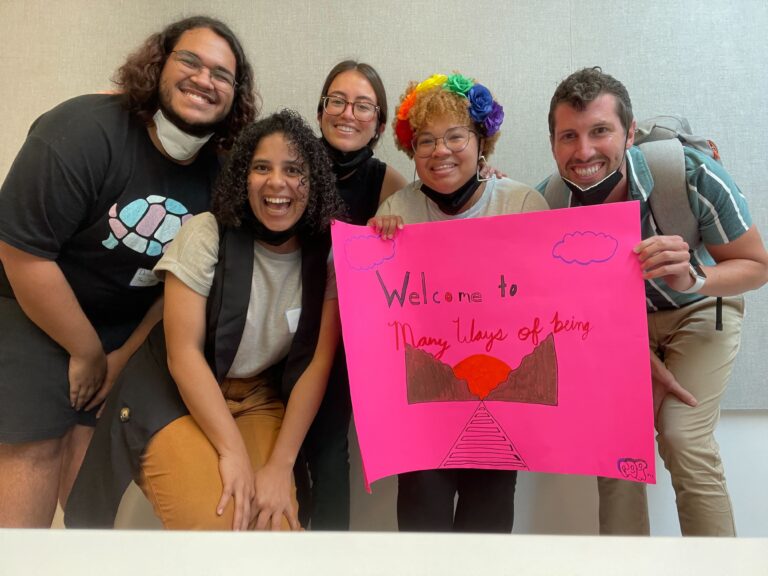They came in groups; young adults and student activists from the university. Some wore dreadlocks, some wore short hairstyles with blonde highlights, a few showed off their tattoos and body piercings. They had the image that immediately grabbed our youthful attention. The talks they gave were opened with a “conscious” dancehall or rap song that was thought to possess a persuasive “positive message.” This was a connection-building technique they would have learned or proposed to funders for their interventions.
We knew they were there to talk about sex. They had forty minutes to speak to us. HIV and AIDS awareness campaigns were part of the major thrust of development agencies in the 2000s, and the focus was on mobilizing youth to be change-makers.
As a secondary school student, the HIV and AIDS awareness campaigns put the issue of sex, particularly not having sex, front and center. Governments and civic leaders deployed their own meanings and messages through prevention and awareness campaigns in order to limit sexual freedoms and offer half-baked sexual education that read youth sexual activity (and sexuality) as totally negative.
A, B, C. Abstain. Be faithful. Use a Condom. “Prestige schools” like the one I attended had no interest in campaigns bringing to light sexual activities and desires in the student population. School administrators generally resisted the efforts of activists entering the compound to distribute condoms to students. When they were admitted entry, the talk was broadly about “taking sex seriously” and understanding the “consequences of actions”.
Outside of the school, in public squares or at major social events, condoms were handed out wantonly, hardly ever with an explanation or context. Having a condom placed in your hand in a carefree way as a teenager was confusing. The teaching in school actively promoted abstinence and the world outside of that institution assumed we knew enough about sex or already engaged in it.
• • •
I had to learn to play the games for boys; rev an engine with the accelerator in my mouth and play and pose as “daddy” with a corresponding girl as “mummy” by the dollhouse. Then I learned to throw rocks at carved-out hillsides, then at houses that were bigger than our own, then at animals and finally at other boys who liked to play or not.
One day at home, I was listening to music when the noise of laughter and children running, stamping, and sliding on the streets came through the window. I ran outside to see what was going on and possibly join the after-school mêlée in the road. One of the boys stood over the standpipe, one hand on the tap’s mouth and the other pushing off the boys fighting to get in his position.
He turned his body around and squeezed on the end of a condom filled with water, running around with it in his arm like an AK-47 rifle. He chased the other boys and launched it at their heads. As he ran, other boys were filling up their condoms to launch as missiles. Some burst on contact and others fell flat, ready to be picked up and launched again.
Girls did not play. A few of them remained on the pavement laughing and pointing at the boys who were chased down and were easy targets of attack. After one minute, I noticed they were divided into teams and played carelessly in the streets with what seemed to be an endless supply of condoms they drew from their pockets. I tried not to get involved, not standing too much into the road. I wanted to wait on the sidelines like the girls, but one of the boys ran into my yard; panting, with his shirt and pants soaked in water. He ran to the side of the house and tried his best to fill two condoms before he ran back into the street struggling to hold them at the same time.

“This is Form 4 or a maternity ward?” the question was a running joke among students. To an outsider, this question would suggest that teenage pregnancy was a prominent feature of school life. It was not. The question was meant to show how much weight of shame and social pressure were placed on the girls that became pregnant during the course of their secondary school education.
When school principals and writers in the letter to the editor section of the daily newspaper decried teenage pregnancy, they were extremely reticent about teenage motherhood. Neither boys nor girls received proper sex education. There was a social license for boys who wanted “big pimpin” and to “stick to girls like glue” at an early age. Girls were shamed and made the subject of social fear for doing the same.
But forcing girls to be nice did not keep them safe and holding up the idea that “boys will be boys” inhibited the interventions needed to teach about gender beliefs, power relations, sexual desires, consent, and rights of all individuals.
I accept the position that early childhood and adolescent sexual activity can present severe risks to healthy emotional and bodily development in youth. At the same time, to imagine that young people are devoid of sexual desires is to cast ignorance about the complexity of childhood and adolescent psychosocial development. Worse, to assume that girls and young women who express sexual desires and act on them are “morally corrupt” and “misguided” promotes a misogyny that leans on education services and civic groups to further police them — their length of skirt, time spent in public spaces, proximity to males, and other arbitrary markers of a “bad girl.”
What was often missing from the conversation was the issue of teenage fatherhood and of older men who sought out sex with underage girls. Girls were at risk on bus stands, walking home, in family gatherings, the many places that returned them to danger. So, the issue of masculinity was not really part of the conversation except when we saw boys’ sexual interest in girls and women as natural, as well as the burden of girls to know and present themselves in a “manner” that “avoids” them. But forcing girls to be nice did not keep them safe and holding up the idea that “boys will be boys” inhibited the interventions needed to teach about gender beliefs, power relations, sexual desires, consent, and rights of all individuals.
Campaigns that seek to promote safe sex must take into account public safety and individual rights. Work with young people must also recognize unequal power relations in sexual relationships among youth and students, sometimes exacerbated by differences in age, that tend to favor boys and men.
• • •
Where condom distribution was prohibited, especially in spaces where conversations about desires, rights, and health issues related to sex were shut down, students had to form their own opinions, reason with people their own age, and come to conclusions before the widespread availability of the Internet on these matters.
I remember the days when a boy would sneak a condom into his book bag and open the pack at lunch time to a hyena pack of boys laughing and pulling it apart, expressing their disgust with the feel of lubricant or throwing it around the room like a game of hot potato.
Where condom distribution was encouraged, the interaction was too short, too expedient, and created more fanfare about young people grabbing at “freeness” rather than a deeper education about sex, desires, and rights.
Safe sex was either thought of us as keeping “children away from sex” or equipping young men with a condom for their penis. Both were insufficient. Respect. Dignity. The rights of the individual. These words needed to be packaged with interventions so that safe sex means healthier sexual negotiations with others and conscious reflection about sex. Or else all that would remain would be wasted resources, torn wrappers, and deflated messages like litter on the roadside after boys had their “fun,” with or without condoms.
This piece has been authored by an Equimundo Writing Fellow, a member of a cohort of forward-thinking individuals with a global perspective on masculinity and male partnership for gender equality. The content of this piece represents the views of the author alone.


